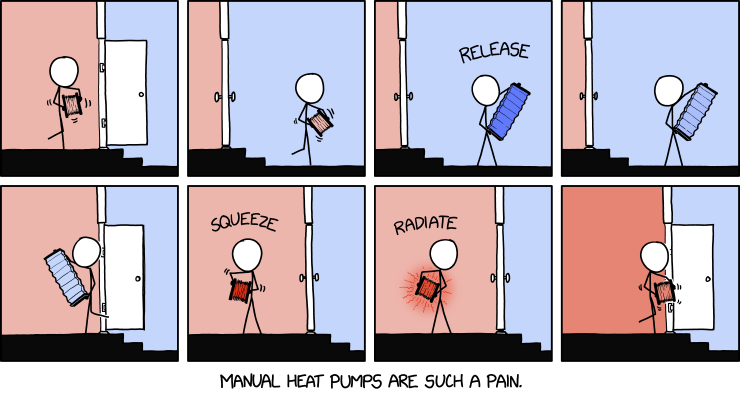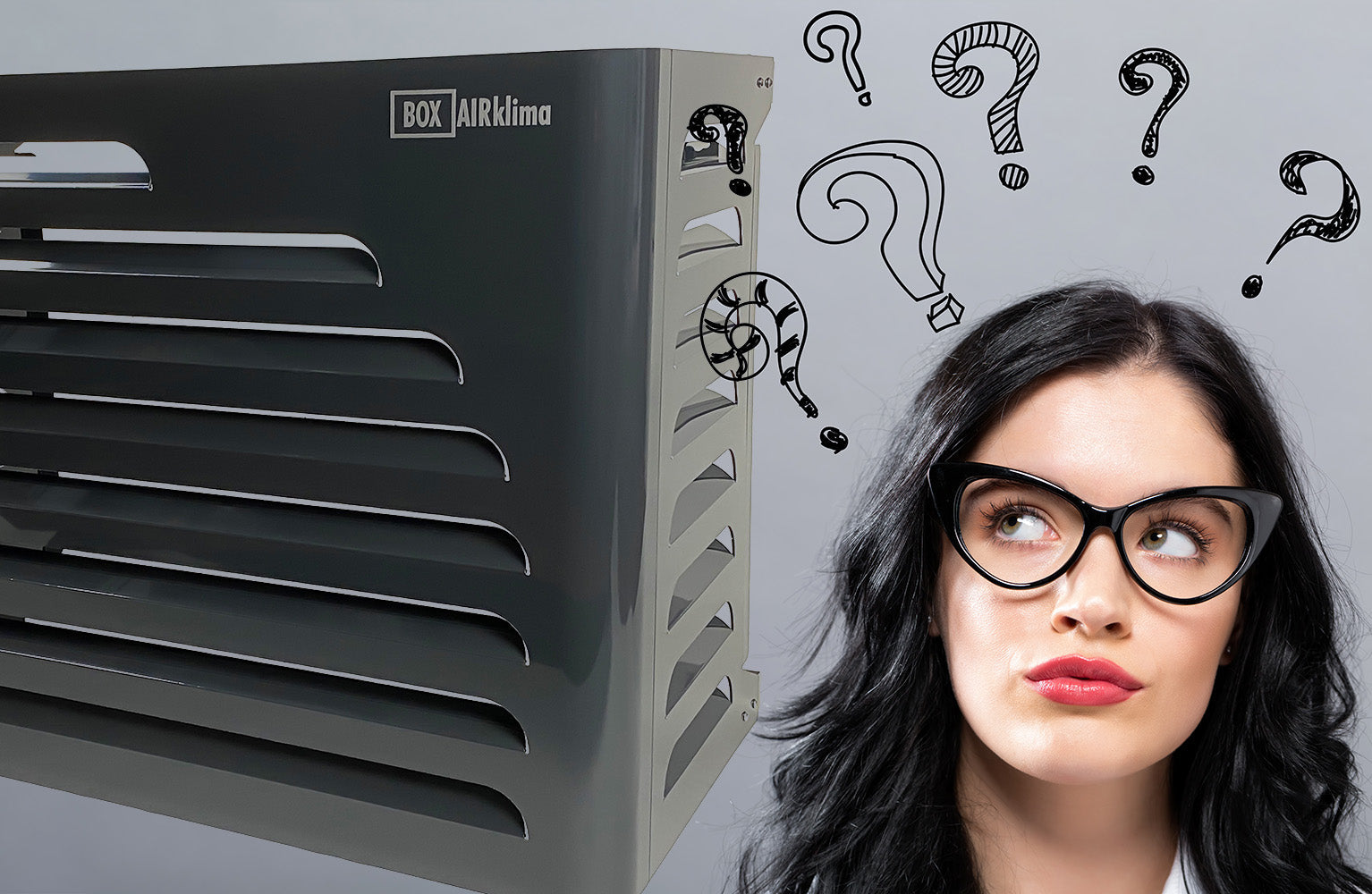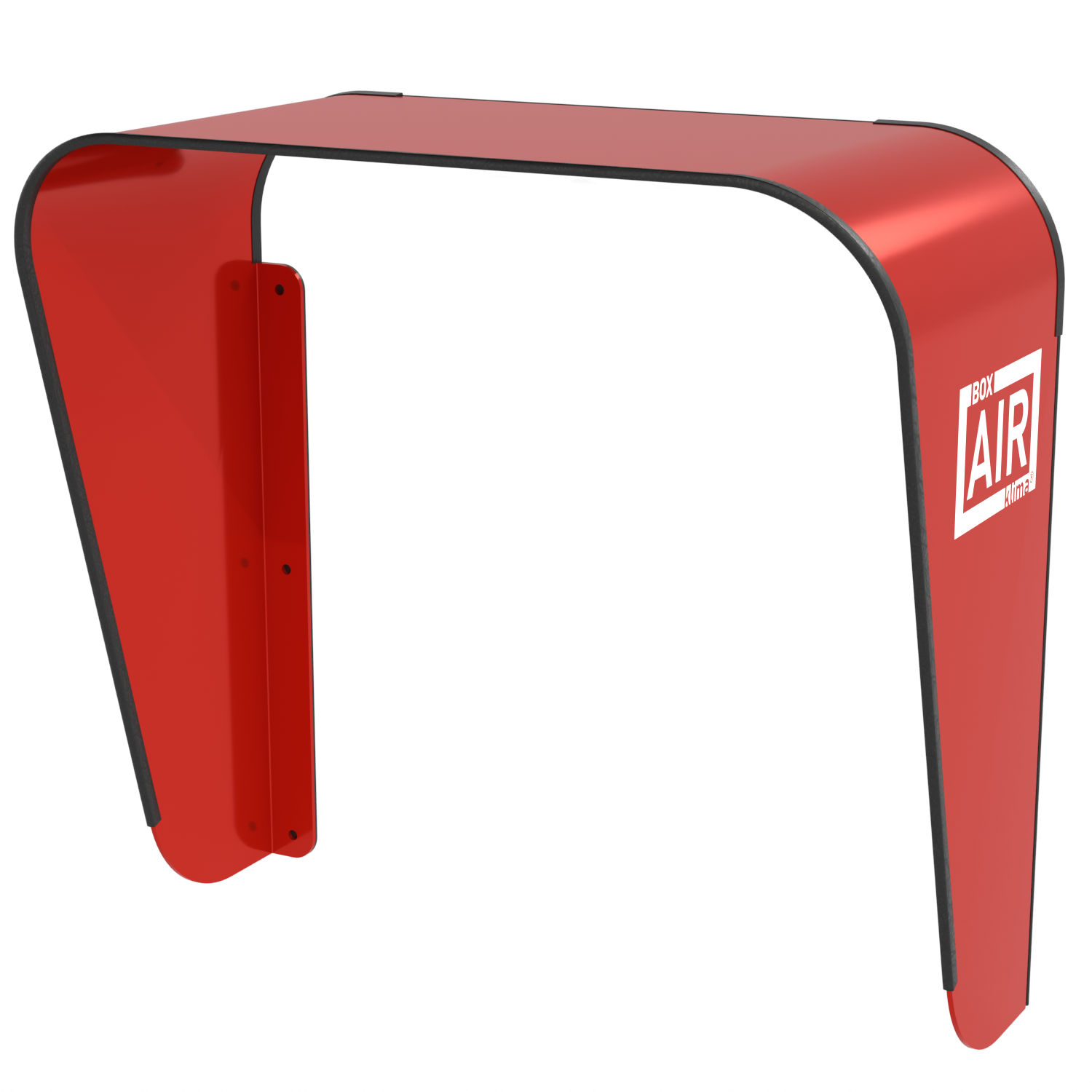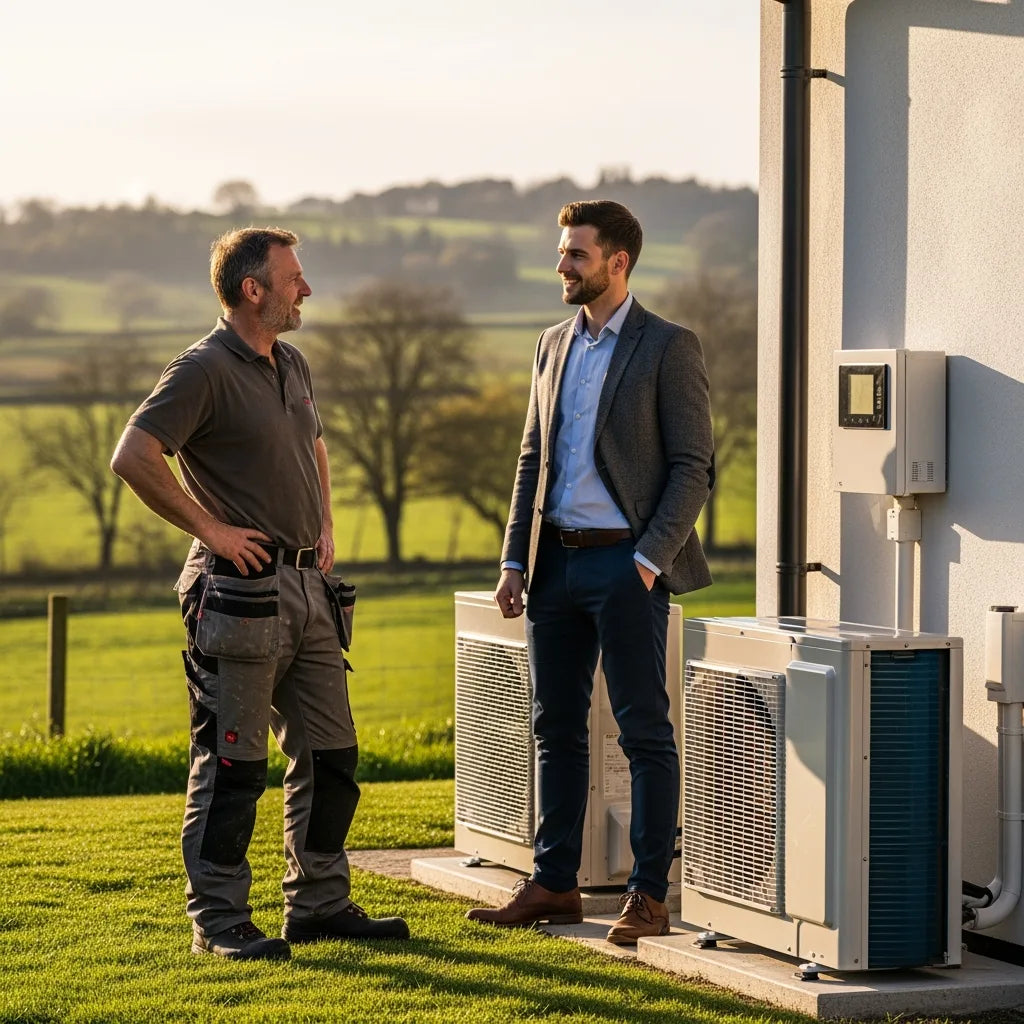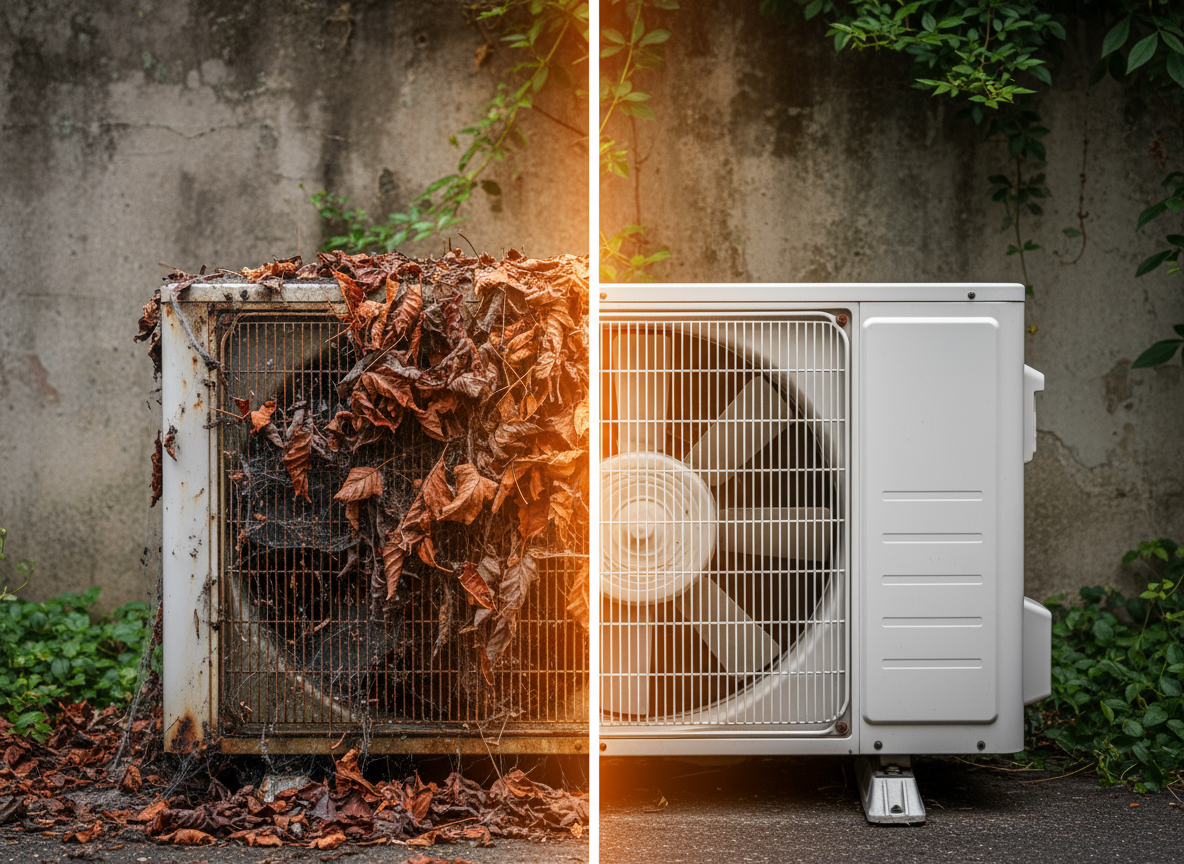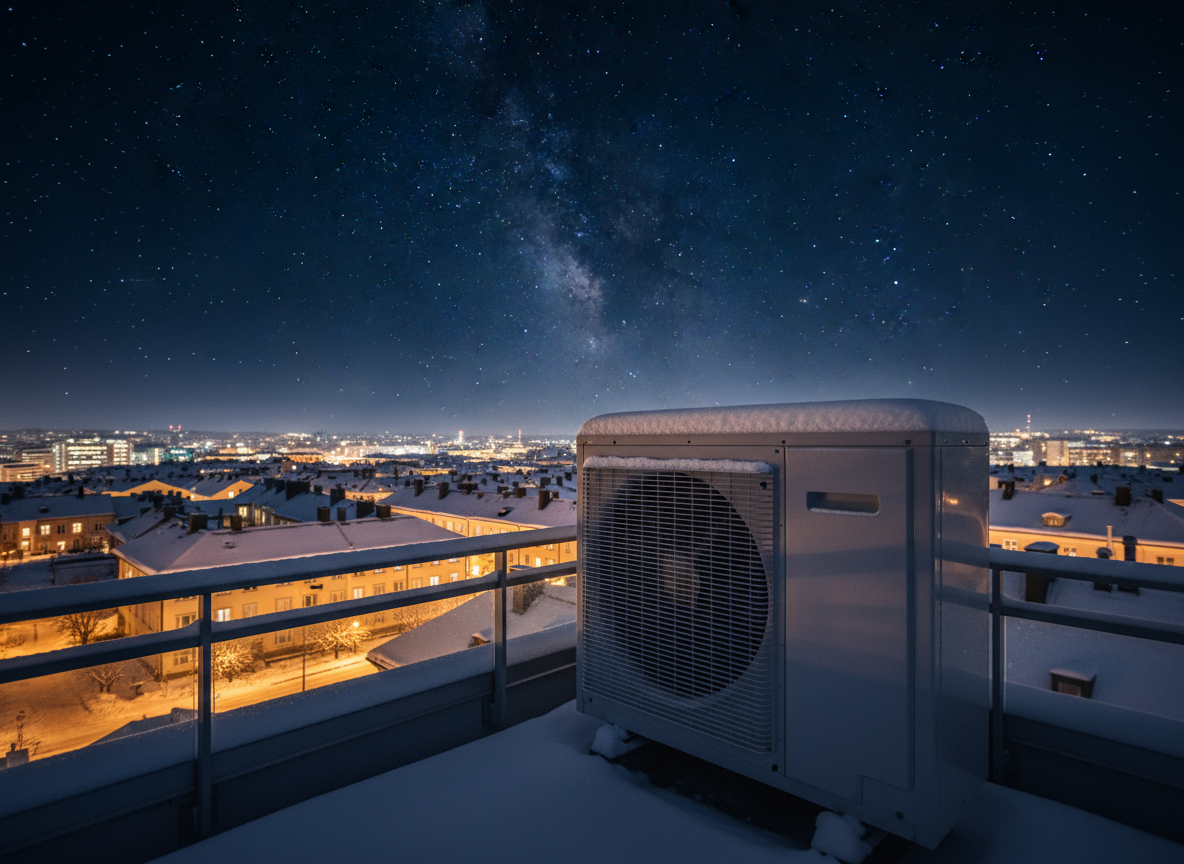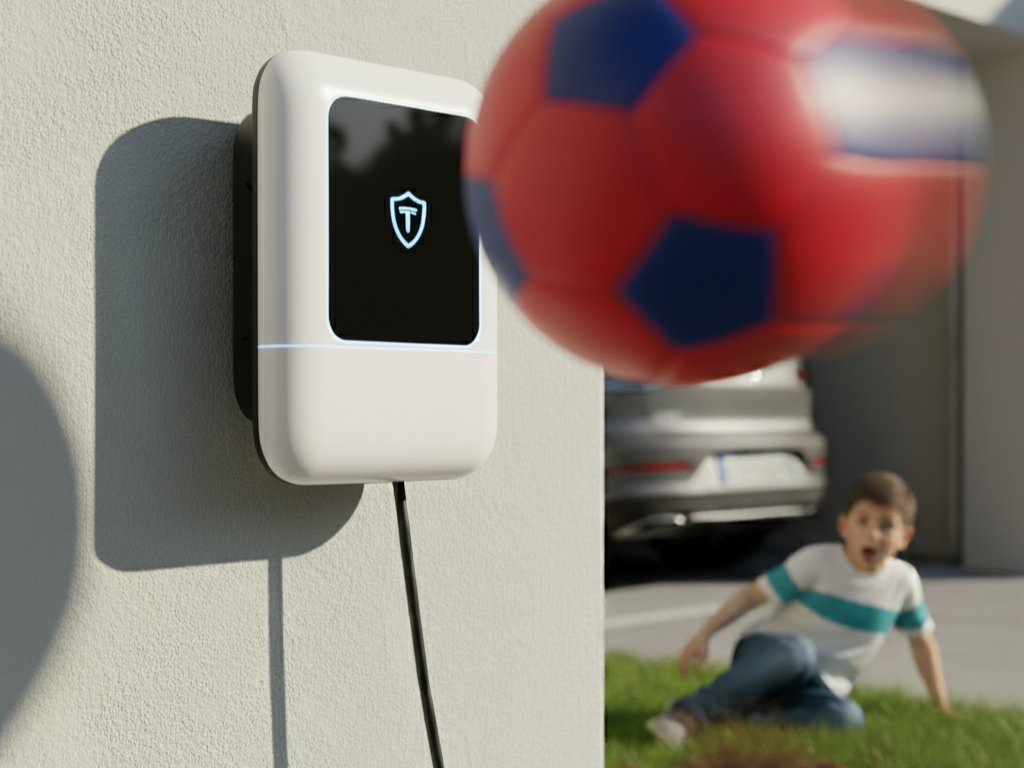Welcome to the Box Air Klima blog! Today, we're going to explain how a heat pump works in a fun and engaging way. To add a touch of humor to the topic, we have a comic strip created by the talented Randall Munroe from XKCD!
"If I'm not going to upgrade to a powered one, I should at LEAST stop leaving the door open so often."
[Fonte: XKCD, CC BY-NC 2.5]
As you can see from the illustration, Randall has come up with a rather amusing way to simulate the operation of a heat pump. Using a sort of bellows, he manually compresses and expands the gas, moving it from the inside to the outside of the house. Of course, this is just a humorous representation, but it helps us grasp the basic principles!
In reality, the operation of a heat pump is a bit more complex. These devices harness the temperature difference between the outdoor and indoor environments to transfer heat from one area to another. They employ a special refrigerant that undergoes a phase change from liquid to gas and vice versa, allowing it to absorb and release heat.
The process involves three main components: the evaporator, the compressor, and the condenser. The evaporator absorbs heat from the outdoor air or the ground, while the compressor increases the temperature and pressure of the refrigerant. Finally, the condenser transfers the heat to the indoor spaces or releases it outside, depending on the desired effect.
This cyclic sequence enables heat pumps to efficiently heat or cool indoor spaces while being environmentally friendly. They are a sustainable alternative to traditional systems and offer numerous benefits, such as energy efficiency and reduced CO2 emissions.
At Box Air Klima, we are passionate about heat pumps, and we provide customized covers to protect and preserve your outdoor units. Our covers, made from composite aluminum, ensure optimal protection against weather elements while adding a stylish touch to your outdoor space.
We hope that this humorous comic strip brought a smile to your face and made the concept of heat pump operation more accessible. Remember, for further information or personalized advice, we are always here to assist you.
And don't forget to visit our blog for more interesting articles and helpful tips about air conditioner covers, heat pump covers, and much more. Thank you for choosing Box Air Klima, your partner for home comfort and sustainability!


